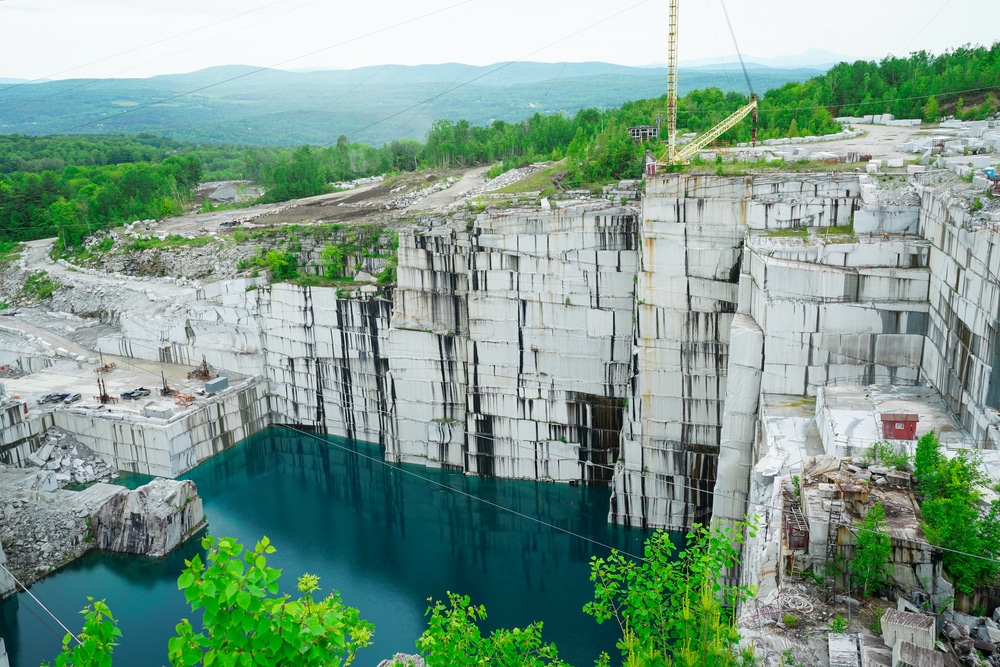Diving right into of Granite Quarries in South Africa
Diving right into of Granite Quarries in South Africa
Blog Article
Unveiling the Mysteries of Granite Quarrying: Where Toughness and Elegance Meet
The world of granite quarrying is a world where the raw toughness of nature merges with human artistry to produce frameworks that stand the examination of time with an air of elegance. From the depths of quarries to the careful sprucing up in workshops, the process of transforming granite into building wonders is a complex dance of practice and technology. As we peer into the depths of this ancient craft, we start to reveal the surprise intricacies that shape the very essence of our developed atmosphere.
The Beginnings of Granite Quarrying
In the annals of building history, the origins of granite quarrying are shrouded in a tapestry of ancient craftsmanship and geological wonders. Going back to old Egypt and Mesopotamia, the removal of granite from quarries noted the beginning of a journey that would ultimately lead to the creation of some of the world's most iconic structures.
Granite quarrying's origins can be traced to the skilled craftsmens that identified the stone's toughness and aesthetic charm. Via a combination of primitive tools and large decision, these very early quarry workers unearthed granite blocks that would come to be the foundation of human beings.
As people progressed, so did the methods of quarrying granite. The Romans, renowned for their engineering expertise, created sophisticated methods for extracting granite to create monoliths, temples, and roads that stood the test of time.
The legacy of these old quarrying methods continues to form contemporary design, with granite remaining an icon of stamina and elegance in construction tasks around the globe. (granite quarries in south africa)
Tools of the Quarrying Profession
The evolution of granite quarrying strategies from old civilizations to modern-day times highlights the important role played by the devices of the quarrying trade in shaping the sector's practices. In old times, quarrying tools were rudimentary, usually containing chisels, hammers, and wedges made from products like bronze or iron. These tools called for significant workforce and time to extract granite obstructs from quarries.

In addition, the intro of pneumatically-driven devices and high-powered equipment has substantially minimized the physical labor needed in quarrying operations, enhancing employee safety and security and performance. As the quarrying sector proceeds to innovate, the tools look at here of the profession continue to be at the center of driving development and shaping the future of granite extraction.
Extracting Blocks of Granite
Making use of accuracy machinery and progressed techniques, the removal of granite blocks from quarries has actually ended up being an innovative process in the modern-day quarrying market. Regulated blowing up strategies are after that employed to Check This Out break apart the granite into manageable sections.

Sprucing Up and Completing Techniques
To attain a perfect surface area on granite blocks, competent craftsmens employ a series of thorough polishing and completing strategies. After the preliminary removal and shaping processes, the granite obstructs undergo a complete polishing phase to improve their all-natural beauty and toughness.
Along with polishing, completing strategies are put on further improve the granite's go look. These techniques may include flaming, sharpening, or cleaning, each offering unique textures and surfaces to fit various visual choices. Flaming, for instance, involves subjecting the granite surface area to high temperature levels to develop a harsh, textured surface, suitable for outdoor applications where slip-resistance is important. Refining, on the various other hand, supplies a matte coating that is smooth to the touch, excellent for interior kitchen counters and floor covering. By carefully selecting and using these polishing and finishing techniques, artisans can change raw granite obstructs into exquisite pieces that display both toughness and style.

Ecological Impact and Sustainability
With the expanding focus on environmental awareness in the industry, granite quarrying techniques are increasingly looked at for their effect on natural sources and long-lasting sustainability. Quarrying for granite can have significant ecological ramifications. The removal process usually entails making use of hefty equipment, dynamites, and big quantities of water, resulting in habitat damage, dirt disintegration, and water pollution. Furthermore, the transport of granite from quarries to refining facilities generates carbon emissions, additionally adding to ecological deterioration. granite quarries in south africa.
To mitigate these impacts and guarantee sustainability in granite quarrying, market stakeholders are embracing different steps. Carrying out sophisticated innovations to minimize energy usage and water usage, reclaiming quarried land for ecological restoration, and promoting liable sourcing techniques are some approaches being used. In addition, qualifications such as the Woodland Stewardship Council (FSC) and the Leadership in Energy and Environmental Layout (LEED) aid customers determine eco-friendly granite items.
Verdict
Finally, granite quarrying is a process that needs specialized tools and strategies to extract blocks of granite and brighten them to a high level of coating. While the environmental influence of quarrying can be considerable, initiatives are being made to improve sustainability techniques in the industry. On the whole, granite quarrying is a delicate equilibrium between using the strength and sophistication of this natural rock while minimizing its effect on the setting.
Report this page